MARKET OVERVIEW
The South America HIV Drugs market is going to emerge as one of the very important parts of the region’s healthcare sector, driven more by the growing need for more effective treatments for human immunodeficiency virus (HIV). As HIV prevalence remains high throughout many South American countries, an increase in demand for art and other HIV drugs should be anticipated. The region has experienced improvements in the availability of these medications, which have been collaborated by the governments, healthcare service providers, and pharmaceutical industries to facilitate the availability of such drugs among patients. This market is expecting further innovation as the new forms and therapies arise.
This South America HIV Drugs market encompasses the development, distribution, and use of pharmaceutical therapies intended to prevent and manage HIV infection. These drugs primarily target the replication process of the virus, where reducing viral loads will keep this from progressing to acquired immunodeficiency syndrome (AIDS). With advancements in healthcare throughout the world, combination therapy and single-tablet regimens with long-acting injectables will become more common throughout the South American market, likely to enhance compliance and, thereby, patient outcomes when trying to manage HIV.
Several factors define the scope of this market. The efforts to expand access to HIV treatment in underserved areas are on-going. Governments in South America are likely to continue investing in public health initiatives that focus on improving healthcare access and affordability. This will be very important in combating the virus in regions with high infection rates, especially in countries like Brazil, Argentina, and Peru. Public-private partnerships and associations with international entities will continue to increase the penetration of HIV drugs among the rural as well as urban populations by availing the most recent treatments available.
The regulatory environment will be another driver of the South America HIV Drugs market. New HIV drugs, both branded as well as generic, have to be approved and introduced into the market of this region after clearing all the regional processes. These procedures will be expected to change and the faster approvals will give the market a chance to experience global developments in HIV treatment at their earliest. Companies will also have to be agile; they should follow the changing pattern of regulation and the healthcare need of the people in South America.
HIV awareness along with an increased demand for prevention measures will also be among the market trends. As awareness campaigns become more widespread and people take proactive steps in managing their health, the need for preventative treatments, such as pre-exposure prophylaxis (PrEP), is expected to increase. The adoption of PrEP will be a key area of focus within the South America HIV Drugs market, offering a preventative strategy for high-risk populations and further driving demand for HIV-related medications.
The coming years will see the pharmaceutical companies and healthcare stakeholders in South America working closely to ensure that the market remains responsive to the evolving needs of HIV patients. New treatments, improved access, and better patient outcomes will shape the direction of the market, ensuring that those affected by HIV receive the care and support they need. The South America HIV Drugs market is on the path to continue developing as an important sector within the region’s healthcare system, with promising advancements on the horizon that will benefit both patients and healthcare providers alike.
South America HIV Drugs market is estimated to reach $296.2 Million by 2031; growing at a CAGR of 3.2% from 2024 to 2031.
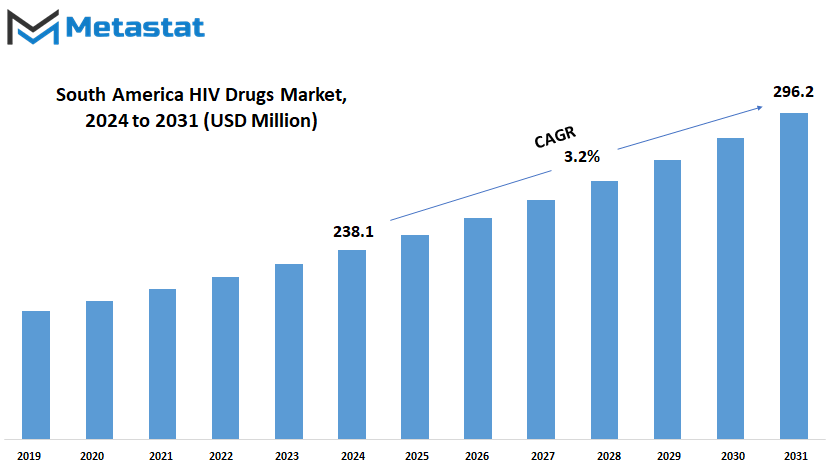
GROWTH FACTORS
The South America HIV drugs market has been remarkable over time, with growth fueled not just by increased awareness towards but also efforts towards making a more early diagnosis happen. Through the years, as knowledge on HIV increases the public awareness in South America, which directly calls for a number of good treatment options. This shift in awareness is not only encouraging individuals to seek medical attention earlier but is also promoting the adoption of advanced therapies. Furthermore, the support from governments and non-governmental organizations (NGOs) through funding and initiatives for HIV treatment programs in developing regions has been instrumental in driving market growth. These collaborative efforts ensure that treatment becomes more accessible to those who need it most.
However, despite these encouraging trends, challenges exist that can limit the growth of the market. One significant barrier is the high cost of HIV medications, particularly in low-income areas where healthcare budgets are constrained. This financial obstacle can prevent many patients from accessing life-saving treatments, thus creating a gap in care for vulnerable populations. Another issue is the development of drug resistance over time, which complicates treatment effectiveness. The side effects that come with the long-term use of HIV drugs also present some challenges, as they lead to lower patient adherence to prescribed regimens.
Looking forward, drug formulations are a bright prospect for the future of the South America HIV Drugs market. Of particular note are long-acting injectable therapies. They reduce the frequency of medication intake and improve convenience and compliance for patients. These long-acting solutions might improve the overall treatment outcomes and patient satisfaction as they address the issues associated with daily pill regimens. The future of this market is quite promising because research and development in this field are in progress.
The focus on making treatments more affordable and accessible will also play a critical role in shaping the future of the market. Governments and NGOs are likely to expand their support for cost-reducing and access-improving programs for newer, more effective therapies. Such efforts, in conjunction with scientific progress, can make a significant difference in the lives of patients while driving market growth. Despite the challenges, the potential for innovation and collaboration suggests a positive trajectory for the South America HIV Drugs market in the coming years.
MARKET SEGMENTATION
By Type
The South America HIV Drugs market is a sensitive area of focus for public health and pharmaceutical advancement, which directly impacts the lives of millions. This market is shaped by the ongoing need for effective treatments and preventive measures, driven by the prevalence of HIV across the region. The market includes various types of medications, each designed to address specific needs within the scope of HIV treatment and prevention. The categories consist of ARVs, drugs for Pre-Exposure Prophylaxis (PrEP), Post-Exposure Prophylaxis (PEP) drugs, among others classified under HIV-related drugs. This categorization represents the drug groups directed at disease management and a decrease in rates of transmission.
ARVs are part of HIV treatment, primarily suppressing the virus and leading to quality-of-life enhancement for individuals infected with this disease. With continuous advancements in medical research, the development of more potent and tolerable ARVs is expected. These drugs are becoming increasingly accessible across South America, particularly in nations prioritizing health initiatives. Similarly, PrEP drugs play a vital role in prevention for high-risk individuals, offering a proactive approach to curbing new infections. As awareness grows about their effectiveness, their demand is likely to rise significantly. In the meantime, PEP drugs, intended as an emergency prescription after possible exposure, will remain an indispensable element of public health plans in specific situations and are forecasted to continue playing the role.
In the future, this South America HIV Drugs market would witness innovation that would make these drugs simpler to take. Developers already are working on long-acting ARVs and combined preparations reducing the number of administration which should make it even easier for patients to complete treatment. These advancements would change the way the disease can be managed, becoming more convenient while still being effective. Preventive drugs, for example, such as PrEP, could become even safer with fewer side effects, thereby widely accepted.
Economic factors, the government policies, and international collaboration will also drive this market. Increased funding of the healthcare system and pharmaceutical companies partnership with NGOs will enhance its accessibility. Overcoming the socio-economic barriers in the drug distribution would be a significant challenge to deal with, but overcoming them is going to shape the future of the HIV treatment and prevention mechanism across the continent.
This progress will be beneficial not only for the individual but also strengthen the regional public health infrastructure, as South America continues to adapt to its unique healthcare demands, making HIV Drugs a prime growth area in the country.
By Application
The South America HIV Drugs market is a vital part of the global fight against HIV, with an emphasis on improving the quality of life of people infected by the virus. The market has expanded over the years due to improvements in medical research, increased awareness, and government initiatives aimed at tackling HIV-related challenges. Some of the applications include treatment and prevention of HIV and its related diseases, which will lead to the overall goal of mitigating the effects on affected populations.
HIV treatment has been significantly advanced. More recently developed drugs are effective, with fewer side effects than previous drugs. Antiretroviral therapy remains the core of HIV treatment. The patient's viral load can be controlled through it, and they live longer and healthier lives. The market is evolving toward offering more accessible and effective treatment options, so that an increased number of people can access these innovations. Efforts toward introducing long-acting formulations and combination therapies are expected to play a significant role in shaping the future of this segment.
In terms of prevention, the market is moving ahead with the help of drugs of pre-exposure prophylaxis or PrEP. Studies have found that these medications significantly decrease the risk of transmitting HIV. These drugs will be beneficial for those whose risk factor is high and likely to contract the disease. Programs for outreach and awareness enhancement are being introduced to improve the adoption of preventive measures and thus reflect the proactive efforts in the war against the spread of HIV. With continuous advancement, prevention-focused medications will probably become more accessible and effective in reducing new infections.
The market also addresses HIV-associated conditions, focusing on the complications and co-infections that often accompany the virus. This includes treatments for opportunistic infections and conditions like Kaposi's sarcoma and neurological disorders. Developing drugs that specifically target these issues is a growing priority, as they are crucial for comprehensive HIV care.
Future of South America HIV Drugs market: The South America HIV Drugs market is expected to experience massive developments in the near future. Advances in high technologies and increasing personalization in medicine will probably transform the way these drugs are manufactured and distributed. Stigma reduction and education about HIV will further motivate people to receive treatment and preventive measures. International collaborations and partnerships could speed up research and facilitate wider access across the region. The market holds good promise for improving outcomes of the affected people because it focuses on innovation and inclusivity.
By End-User
The South America HIV drugs market is expected to undergo considerable development in the following years, as the continent will continue to develop health care systems and increase access to crucial treatment. The different factors influencing this market range from an increase in public awareness, scientific advancements in medical research, to efforts by governments and non-governmental organizations to make better treatment accessible. The focus remains on attaining better health outcomes while ensuring that the challenges of access and affordability are addressed, cutting across diverse communities.
The development of the market primarily revolves around the different kinds of end-users in ensuring that HIV drugs are delivered. At its core are hospitals and clinics delivering specialized care and comprehensive treatment plans. These centers are necessary for the management of more complex cases and patients requiring high-level therapies. Pharmacies, on the other hand, serve as accessible points for individuals to obtain prescriptions, usually working in collaboration with clinics to ensure that care is not interrupted. Home healthcare providers are also gaining prominence, providing treatment for patients who prefer the comfort of their homes, thereby improving adherence and convenience. The government healthcare programs have come out as some of the essential actors in this market, especially in giving free or affordable drugs to the most deprived communities.
They often cooperate with foreign agencies in acquiring funding and other supplies for the marginalized sections so that they do not lack these life-prolonging HIV drugs. Similarly, NGOs are instrumental in awareness creation, outreach work, and provision of medication in difficult-to-reach and underserved communities. Their contributions are crucial in bridging gaps in care that may be left by traditional healthcare systems. Looking ahead, technological changes will likely aid the market for South America HIV Drugs: innovative drug formulations which can either reduce the number of required doses or minimize side effects. Besides, telemedicine, due to its increasing popularity, can ensure better patient monitoring and consultation in the even the most remote parts of countries with limited medical infrastructure. Policy planners and industry players are expected to focus on how to Control the cost of drugs, allow generic alternatives, and fund further research and development.
The future of the South America HIV Drugs market seems optimistic, as collaborative efforts drive progress. The region will make meaningful strides in combating HIV and improve the quality of life for those affected by prioritizing patient-centric approaches and leveraging advancements in healthcare delivery.
|
Forecast Period |
2024-2031 |
|
Market Size in 2024 |
$238.1 million |
|
Market Size by 2031 |
$296.2 Million |
|
Growth Rate from 2024 to 2031 |
3.2% |
|
Base Year |
2022 |
|
Regions Covered |
Brazil, Argentina, Colombia, Ecuador, Rest of South America |
REGIONAL ANALYSIS
The South America HIV drugs market is likely to register notable growth in the years to come as the prevalence of HIV/AIDS is becoming an increased focus in the region. The contribution from Brazil, Argentina, Colombia, Ecuador, and many other countries in pushing for improved treatment and availability makes the future quite positive. It is due to government programs, international collaboration, and breakthroughs in medical science that are changing the situation in these regions. These efforts are serving to create a more holistic method of dealing with the infection and ensuring that more people achieve access to life-saving medication.
Brazil, being the most significant country in South America, plays a significant role in the market. Strong healthcare systems and long histories of fighting HIV/AIDS have created a more effective approach by Brazil in managing the situation. Brazil is famous for trying to provide free antiretroviral therapy by its public healthcare system. This had set an example for nearby countries and made Brazil lead the battle against HIV/AIDS.
Argentina also shows considerable progress, and it focuses on expanding healthcare coverage and improving drug access. Programs in Argentina are more focused on reducing the stigma of HIV, which motivates more people to go for testing and treatment. Such a change in attitude is necessary to create an enabling environment where innovations in the South America HIV drugs market can be sustained.
Colombia is another critical contributor, whose health system continuously works toward improving access to HIV treatments. With continuous collaboration between the local governments and international organizations, Colombia is witnessing improvements in awareness and treatment options. Educational campaigns and accessible testing centers have been some of the significant factors driving the demand for effective drugs in the region.
Ecuador, though smaller in comparison, is not to be ignored. The initiatives being taken in Ecuador include focused programs for at-risk populations. These combined with growing emphasis on cutting-edge therapies are expected to help the market grow ahead.
The other part of South America also does not lag behind in supporting the development of the market. The governments as well as NGOs in the countries in that region have focused efforts on preventing, treating, and educating about HIV. This leads them to open windows for improving availability and dispensation further.
Technological advancement and investment in healthcare infrastructure in South America will lead the HIV drugs market forward in the region. The country, with its efforts to address the barriers to accessibility and with regional collaboration, will move ahead to make great strides in the fight against HIV/AIDS and create a brighter future for the affected populations.
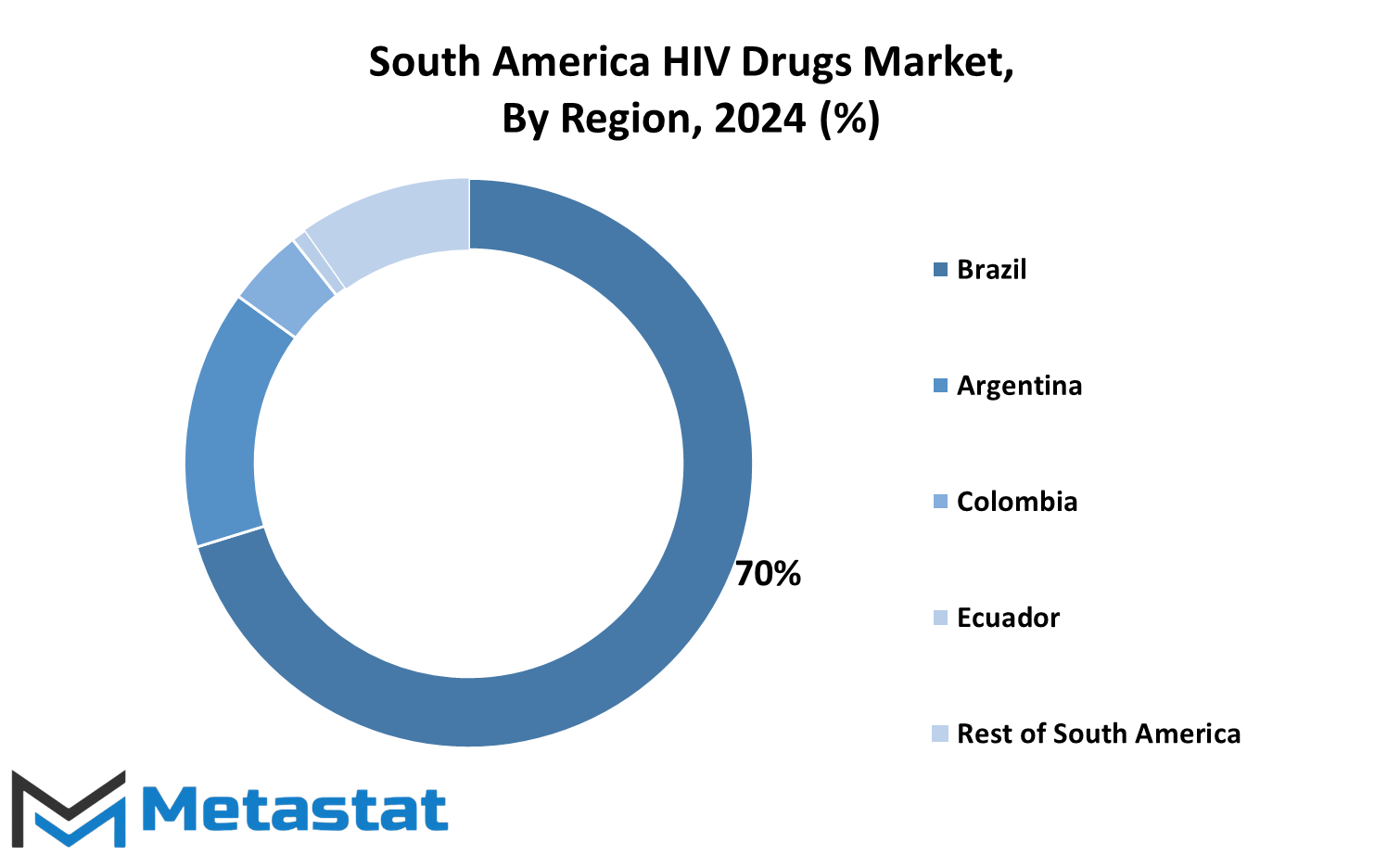
COMPETITIVE PLAYERS
The South America HIV Drugs market is undergoing dynamic change as improvements in healthcare and a growing focus on fighting HIV/AIDS reshape the pharmaceutical industry in the region. With the increasing availability of medical resources and a concerted push to improve public health, this market is expected to expand significantly in the coming years. The collective participation of major pharmaceutical companies along with continuous research and development is paving the way for better treatment options and improved outcomes for patients in South America.
The key players in the industry, including Boehringer Ingelheim, Bristol-Myers Squibb Company, and F. Hoffmann-La Roche AG, are driving innovation by investing in cutting-edge therapies. Companies like Gilead Sciences, Inc., and GlaxoSmithKline plc are also at the forefront, leveraging advancements in antiretroviral drugs to provide more effective and accessible treatments. The efforts of other major contributors, including Johnson & Johnson, Merck Group, and Viatris Inc., underscore the collaborative spirit within the pharmaceutical landscape, as these organizations work toward addressing the specific needs of South America’s diverse population.
The South America HIV Drugs market also benefits from the growing awareness of the disease and its effects, prompting governments and nongovernmental organizations to prioritize prevention and treatment programs. Companies such as Pfizer Inc., ViiV Healthcare, and Teva Pharmaceutical Industries Ltd. Have especially contributed to the production of medications to address a wide range of patient requirements. The addition of generic drug manufacturers, including Cipla Limited, Mylan N.V., Aurobindo Pharma, and Hetero Drugs Ltd., ensures that affordable options remain available, thereby enhancing the reach of treatment across economically varied regions.
Going forward, the concept of personalized medicine and the use of long-acting therapy will alter the treatment scene. Innovation in drug delivery systems will ensure that more frequent dosages can be lessened. Thus, in this scenario, patients are going to comply much better than before. Moreover, the advancement of digital health solutions-the use of telemedicine and remote patient monitoring tools-will further consolidate the region’s ability to effectively manage the HIV/AIDS scourge.
As the pharmaceuticals companies and healthcare organizations evolve, the future of the South America HIV Drugs market looks promising. Amgen Inc. and Ranbaxy Laboratories, a subsidiary of Sun Pharmaceuticals, are best suited to add to this growth with innovation and patient care. As people continue to work together to make a difference in lives, this market will be the key player in the fight against HIV/AIDS worldwide.
South America HIV Drugs Market Key Segments:
By Type
- Antiretroviral Drugs (ARVs)
- Pre-Exposure Prophylaxis (PrEP) Drugs
- Post-Exposure Prophylaxis (PEP) Drugs
- Other HIV-related Drugs
By Application
- HIV Treatment
- HIV Prevention
- HIV-Associated Conditions
By End-User
- Hospitals and Clinics
- Pharmacies
- Home Healthcare Providers
- Government Healthcare Programs
- Non-Governmental Organizations (NGOs)
Key South America HIV Drugs Industry Players
- Boehringer Ingelheim
- Bristol-Myers Squibb Company
- F. Hoffmann-La Roche AG
- Gilead Sciences, Inc.
- GlaxoSmithKline plc
- Johnson & Johnson
- Merck Group
- Viatris Inc.
- Pfizer Inc.
- ViiV Healthcare (GlaxoSmithKline)
- Teva Pharmaceutical Industries Ltd.
- Cipla Limited
- Mylan N.V.
- Aurobindo Pharma
- Hetero Drugs Ltd.
- Amgen Inc.
- Ranbaxy Laboratories (Sun Pharmaceuticals)
WHAT REPORT PROVIDES
- Full in-depth analysis of the parent Industry
- Important changes in market and its dynamics
- Segmentation details of the market
- Former, on-going, and projected market analysis in terms of volume and value
- Assessment of niche industry developments
- Market share analysis
- Key strategies of major players
- Emerging segments and regional growth potential



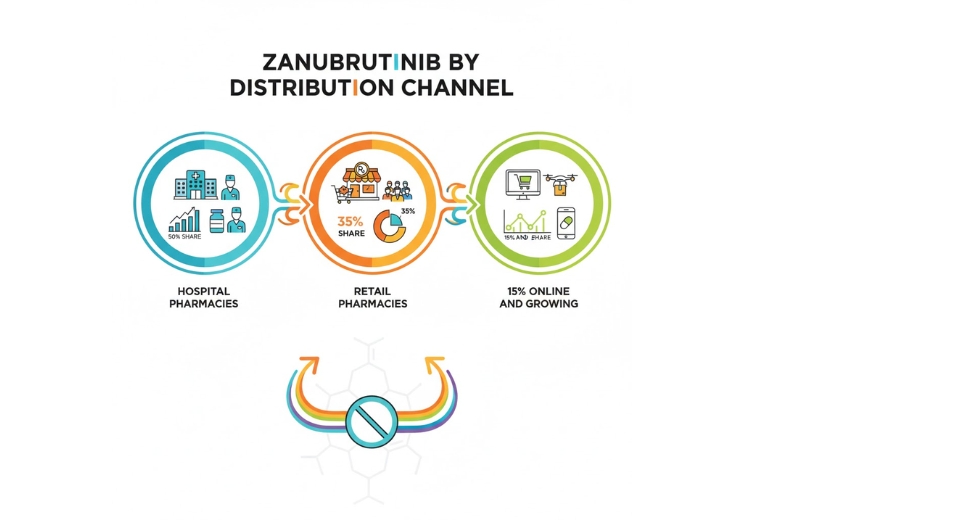
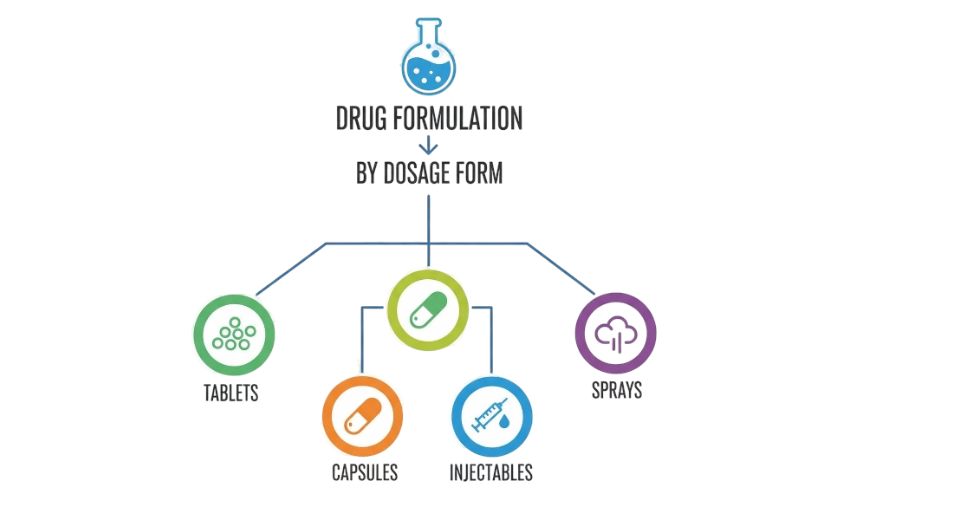
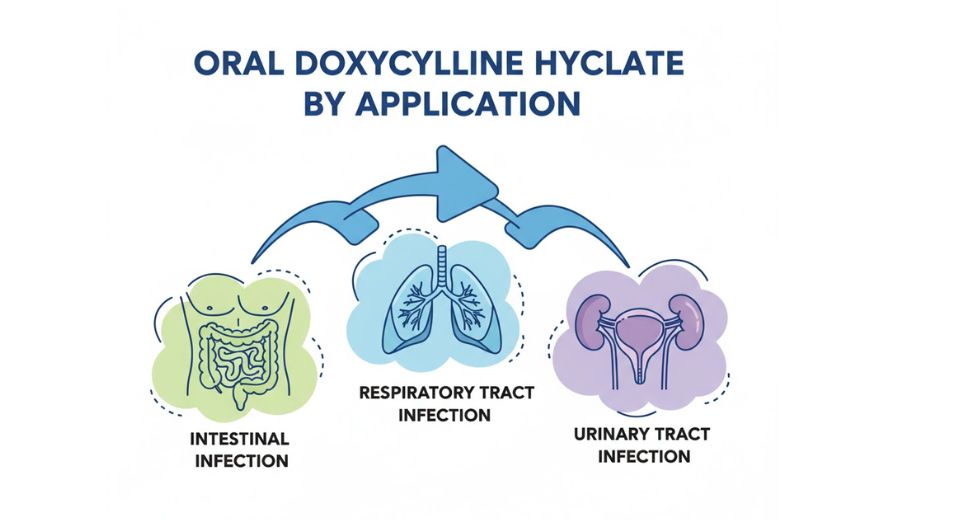
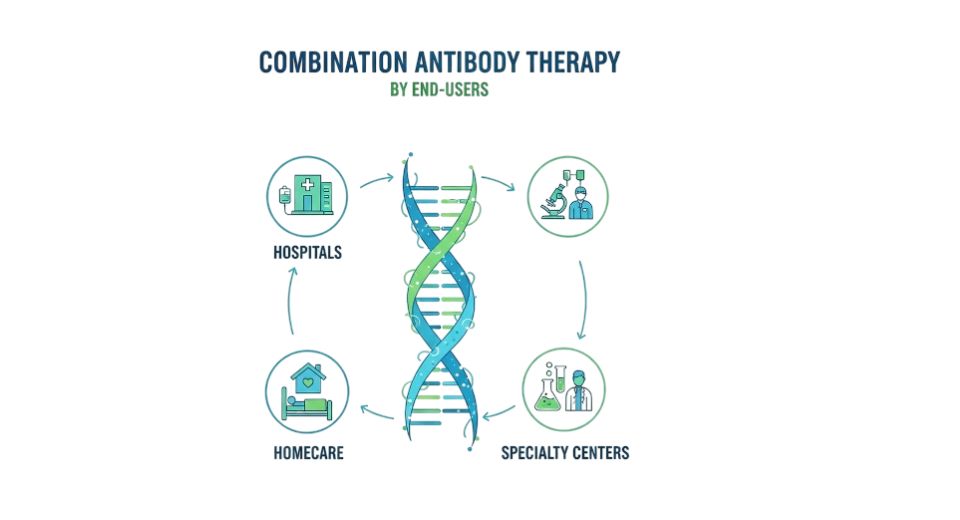

 US: +1 3023308252
US: +1 3023308252






